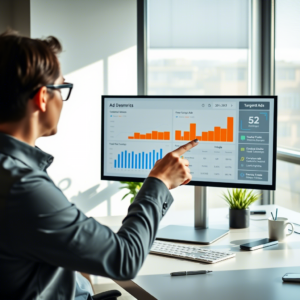Imagine having a website filled with high-quality content, but it’s struggling to rank on search engines or retain visitors. One powerful yet often overlooked strategy to improve SEO and enhance user experience is internal linking.
Internal linking refers to the practice of linking one page of a website to another page within the same domain. While it might seem simple, when done strategically, internal linking can boost rankings, increase page views, and enhance site structure. In this article, we’ll explore the best practices for internal linking, why it’s crucial for SEO, and how you can implement it effectively to drive more traffic to your site.
1. Why Internal Linking is Essential for SEO
Internal links are not just for navigation—they help search engines understand site structure and establish a hierarchy. Here’s why they are important:
- Distributes Page Authority (Link Equity): Links pass authority from one page to another, helping important pages rank higher.
- Improves Indexation: Search engines crawl internal links to discover new pages.
- Enhances User Experience: Well-placed links make it easier for users to find relevant content, keeping them on your site longer.
A practical example: If you run a blog about digital marketing, linking an article about SEO basics to another about keyword research helps users navigate related content effortlessly.
2. Best Practices for Creating Effective Internal Links
To maximize the benefits of internal linking, follow these best practices:
Use Descriptive Anchor Text
Instead of using generic text like “click here”, use meaningful phrases like “learn more about keyword research strategies”. This helps both users and search engines understand the linked page’s topic.
Link to High-Value Pages
Focus on linking to pages that you want to rank higher. If a particular article or landing page is crucial for conversions, internally link to it from multiple relevant pages.
Avoid Overloading with Links
Too many links on a single page can dilute their value. Stick to a natural flow, linking only when it enhances user experience.
Use a Logical Site Structure
A well-organized website with a clear hierarchy improves both SEO and usability. Aim for a pyramid structure, with the homepage at the top, followed by category pages, and then individual posts or product pages.
3. How Internal Linking Increases Engagement and Reduces Bounce Rate
A high bounce rate (when users leave after viewing one page) can negatively impact your site’s performance. Internal links encourage visitors to explore more pages, reducing bounce rates and increasing session duration.
Consider an e-commerce site selling fitness equipment. A blog post about “Top 10 Exercises for Weight Loss” can include internal links to:
- A product page for resistance bands.
- A related article about nutrition tips for weight loss.
- A guide on creating a home gym.
These links keep users engaged while subtly guiding them towards valuable content and potential purchases.
4. Internal Linking Strategies for Different Types of Websites
Different websites require different internal linking strategies. Here’s how you can optimize linking based on your site type:
Blogs
- Link to older, related blog posts within new articles.
- Create pillar pages that act as comprehensive guides and link to related subtopics.
E-commerce Sites
- Link product pages to relevant blog posts.
- Use category pages as hubs, linking to all related products.
Service-Based Websites
- Link from service pages to case studies or testimonials.
- Use blog posts to guide visitors to service pages for lead generation.
5. Common Mistakes to Avoid in Internal Linking
Even with the best intentions, mistakes in internal linking can hurt SEO. Here are key pitfalls to avoid:
Using Too Many Links in a Single Page
Google recommends a reasonable number of links per page. Excessive links can confuse users and reduce link equity.
Linking to Unrelated Content
Only link to relevant pages. If a page about email marketing links to an unrelated SEO guide, it may confuse users and diminish credibility.
Ignoring Orphan Pages
Orphan pages are pages with no internal links pointing to them. These pages are difficult for search engines to discover. Regularly audit your site to ensure all valuable pages are linked.
Relying Solely on Automated Internal Linking
While plugins and automation tools can help, manual curation ensures natural, meaningful connections between content.
Conclusion
Internal linking is a powerful yet often underutilized SEO strategy. When done correctly, it can significantly boost your website’s search rankings, enhance user engagement, and create a seamless browsing experience.
By following best practices—using descriptive anchor text, linking strategically to high-value pages, and maintaining a logical site structure—you can unlock the full potential of internal linking.
Now, take a moment to review your site. Are you utilizing internal links effectively? Start implementing these strategies today and watch your traffic grow!
Got any questions or insights? Share your thoughts in the comments below!




